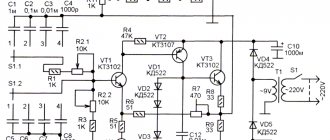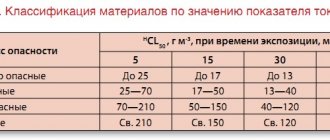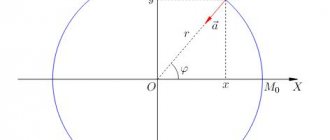What is a potential equalization box
Any building with metal structures, engineering and communication networks includes electrical conductors. A potential difference occurs if they are not connected to a single source. It is believed that a breakdown of the power cable and insulating wire, or a voltage drop can cause this. For example, if a person touches the body of a household appliance, electric stove or other electrical appliance, there is a possibility of an electric shock, which will lead to death.
Example of EMS in premises
For your information! According to the rules, all devices, structures that conduct current in a building, and utility electrical networks are combined into one circuit and connected by a PE terminal block. The grounding gasket is done separately. In some buildings it is carried out together with the main wire.
What does the PMC look like?
If the control system is properly organized, during breakdowns of current-carrying elements, a short circuit or current leakage occurs, the entire assembly will be deactivated. The conductive section will be inactive and safe for human life.
Potential equalization in the bathroom
Since the bathroom is a particularly dangerous place, the organization of the alignment scheme should begin there. The reasons for such a high electrical hazard in the bathroom lie not only in the increased level of humidity, but also in the high concentration of metal conductors, that is, pipes. Installation of the scheme is carried out as follows:
- A plastic box with a tire is installed directly in the bathroom or next to it.
- From each metal object (appliance housings, pipes, lamps, door frame, if it is made of metal), as well as from the grounding contact of each socket and switch installed in the bathroom, a separate conductor is laid to the mounted box.
- The wires are connected by securely clamping them with bolts.
- One conductor is laid from the bus to the distribution panel and connected to its grounding.
It is important to know that for the potential equalization circuit to work effectively, you should not use a series connection of equipment - a separate wire must lead from each metal surface or device to the box.
In rare cases, it is possible to connect no more than 2 devices in series, but without breaking the conductor.
Basic conditions for the box
PMC, as mentioned above, is installed wherever there are conductive networks. To carry out electrical installation you need to follow simple rules:
- The SHDUP box must be installed in bathrooms;
- it should not be limited. After installation, it is immediately brought into working condition.
Elements such as sockets, electrical equipment, switches are routed through the PMC to the control system.
Connecting the SUP
Note! It is preferable to use a hidden potential equalization box in the area of sanitary risers. Any electrically conductive surfaces (open and closed) and other electrical devices are connected to the general network.
You may be interested in Description of cable stocking
Main SUP
It is laid directly during the construction of the building or during its reconstruction or major repairs.
Main components of the SUP:
- Ground loop.
- PE wires
- Main grounding bus.
We will not go into details of the organization of the main management system, since this is the topic of a separate article, but we will present three tenets of its construction:
- It is strictly prohibited to combine the wires used by the control system with the working zero (N).
- Grounding should be carried out according to a radial scheme, that is, a separate conductor should be connected to each element.
- No switching devices can be installed in the system, since one of the main requirements states that the conductors included in it must be continuous.
The need for additional EMS and its main elements
It would seem, why install an additional system if there is a main one, there are several good reasons for this, here are two of them:
- Ensuring safety in wet areas where electrical equipment is installed (for example, bathrooms and kitchens).
- There is no guarantee that the neighbor below did not replace metal pipes with plastic ones in the riser or heating circuit during the repair process, thereby violating the main control system.
As you can see, these two reasons are quite enough to create a potential threat to life.
Main elements of the additional system:
- Potential equalization box (PEC), equipped with a special terminal block (SHDUP) for additional connection of elements with conductive properties. It is advisable to choose a product from well-known brands, for example, DKC, Hegel or domestic models KUP2604, KUP2603, KUP1101, etc. The size of the box is selected depending on the number of connected elements. In most cases, standard 100x100x50 mm will be sufficient, for example, like the KUP version for open installation, shown in Figure 4.
In principle, you can also use boxes from unknown brands from the Middle Kingdom, just before installing, make sure that non-flammable material was used for their manufacture. In addition, check the quality of the internal terminal block. There were many cases where the fastening did not provide reliable contact.
Fig 4. Appearance of the potential equalization box
- Wires used by DSUP. Their number must correspond to the number of connected elements. The basis is copper wire, whose cross-section is in the range of 2.5-6 mm. Let us immediately note that aluminum conductors are not suitable for this task, since the oxide film formed on it can disrupt the contact, negating the functional purpose of the system.
Varieties of potential equalization box
For safe operation, two types of equalizers are used:
- OSUP - main;
- DSUP - additional.
Basic adjustment
During their construction, service and residential facilities are installed by the BPCS system, the diagram of which is prepared during design.
What is included in the BPCS:
- loop or grounding structure;
- wires acting as current equalizers;
- ground wires;
- tire.
Any surfaces that conduct current, as well as similar structures, are provided with protection in rooms and structures in the event of a power outage thanks to the main system. This applies to pipelines, metal components, electrical communications, etc. The high risk of danger arising for any reason is redirected to the ground. This happens thanks to the basic potential equalization system.
Types of PMC
Note! For correct operation of the BPCS, it is important to correctly connect the wire cores. You cannot connect PE protection with a working zero N. Compliance with this rule applies to TN-S, TN-CS and TT groundings.
Additional adjustment
This type of equalization is established in special cases, for example, when changing electrical communications in premises:
- when installing auxiliary equipment;
- when replacing iron pipelines with plastic ones.
Additional potential equalization
This rule applies when installing geysers, boilers and other equipment.
In such cases, it is necessary to install a DSUP, which is a potential equalization box with connecting wires.
Installation of the leveling bar
Connection to elements that do not have special contacts for connection is made using clamps or clamps. SHDU buses are usually placed in boxes, which differ in the method of installation on structural elements. They can be located in the following places:
- in the cavities of adjacent wall piers;
- directly within the walls themselves.
In addition, they are often made in the form of wall mounting. Their installation and fastening in the elements of wall structures is provided for at the construction stage. The specific location of the box with the tire is selected according to a pre-designed diagram and taking into account that they have free access. This is necessary to monitor their condition and maintain them.
In a building that has already been built and is in operation, open boxes are installed, accessible for carrying out the necessary electrical installation operations. The location of their installation is selected so that the length of the prefabricated conductors and the grounding bus is minimal. This will save on consumables.
The installation of a reliable potential equalization system at any operating facility is a guarantee of protecting people working or living in it from electric shock.
Purpose of the potential equalization box
Any electrical equipment found in a residential building, office or building requires potential equalization during operation. This is required by safety regulations. PMC reduces the potential difference. This applies to grounded metal parts of electrical equipment connected to the ground or floor.
The process occurs by connecting the ground to conductors laid on the surface. This circuit reduces touch voltage in the event of short circuits, insulation damage, or increased voltage and is an option for potential equalization.
Important! The PMC complements the EPS and ensures safety from electric shocks in showers, as well as other objects with increased electrical hazard.
Cases of potential difference occurrence:
- with increasing static electricity;
- for defects in metal products;
- during high atmospheric tension, for example, during a thunderstorm;
- the action of stray currents can also lead to potential differences.
You might be interested Features of decorative cable
Purpose of the PMC
Short circuits on the housings of electrical appliances and current leakage from wires pose a particular danger. This often happens in the bathroom, when a person touches the device with wet hands and receives an electric shock. This is facilitated by damaged insulation that runs near water pipes. As a result, a potential difference may occur.
Potential equalization will protect against electric shock. All metal parts of household appliances, electrical equipment housings, water pipes and the heating system are connected into a single circuit using special conductors. This equalizes the electrical potential and protects against electric shock when touched.
Examples of using the system
Note! Effective grounding is a prerequisite for potential equalization. Thus, all metal objects and equipment bodies are combined into one conductor and connected to a common bus in the ground with a distribution panel.
Types of equalization systems
There are two types of equalization systems, one of which is called the main one (OSUP), and the second - additional (DSU).
The latter will not be able to function without a properly functioning main system, which must meet the following requirements:
- Starting the GZSh in a distribution cabinet, when arranging it, it is forbidden to combine PE and N conductors.
- For all structures that are supposed to be grounded, only a radial connection scheme to the ground loop is selected.
- It is not allowed to install separate switching devices in protective grounding circuits.
Unlike OSUP, DCS combines conductive parts of electrical equipment, the distance between which is so large that a dangerous potential difference can form in them. There is also a possibility that they can be accidentally touched at the same time (with both hands, for example). These same elements include steel parts of underground and above-ground structures, as well as neutral protective conductors (photo below).
The most common case is when different potentials arise on the sewer and water pipes. It is worth noting that if a current leak occurs in the water supply pipes, then the likelihood of an electric shock while swimming will be extremely high. The main reason is the simultaneous touch of the faucet and the force of the water. By installing a potential equalization circuit in a timely manner, you will protect yourself and your loved ones from electric shock.
Where is it often used?
Complex safety mechanisms are installed in rooms with electrical equipment to ensure the safety of working with electrically conductive devices. A potential equalization system is one type.
Potential equalization system mechanism
Where is PMC used:
- at the stage of electrical installation of buildings, during construction work in multi-storey residential buildings;
- it is mandatory to install a potential equalization box in the bathroom;
- Outdoor installation is provided.
The electrical safety of premises largely depends not only on the devices, but also on the potential equalization system. This review focuses on the importance of this process when using electrical equipment.
Places of application
Note! The main function of the EMS is to protect a person from electric shock in places with an increased probability of such an event. This could be a kitchen or a bathroom. Places with high humidity need to install such a system for calm washing of dishes or taking a shower.
Organization of an additional system
The whole process can be divided into two stages: preparatory and, in fact, installation.
First of all, it is necessary to draw up a DSUP diagram, at least approximately. This will allow you to “not be tricky” with connections, for example, forgetting to connect any element to the terminal block or connecting several PE wires to it. An example of a correctly completed sketch is shown in Figure 5.
Figure 5. Organizational diagram of an additional potential equalization system
The sketch shows the elements that must be connected to the PMC; we list them:
- 1 and 2 – cold and hot water supply pipes.
- 3 – sewer system pipe.
- 4 – bathtub body (if it is metal, as you understand, there is no point in grounding an acrylic bathtub).
- 5 – heating radiator (if there is one in the bathroom).
- 6 – screen of the “warm floor” system.
- 7 – door frame (if it is made of metal).
- 8 – ventilation grille (provided that metal pipes are used in the ventilation system).
With properly organized electrical wiring, it does not make sense to connect wires separately to electrical appliances, since this function is performed by the grounding conductor.
Having made a sketch, you need to decide where the PMC will be installed, there are no special criteria for this, the main thing is that it is easy to get to it at any time.
Having decided on the location of the box, you should think about the routes for the wires going to the control panel. We remind you that they must be laid in a radial pattern, that is, a separate wire goes to each element.
If there are no problems when connecting the system conductors to the terminal box, then some difficulties may arise with grounding the pipes. The situation can be corrected using special clamp clamps, one of them is shown in Figure 6.
Figure 6. Clamp for connecting protective ground to pipes
The place for attaching the ground wire to the clamp is marked with a red circle.
After the DSUP is installed, the KUP terminal block is connected to the PE of the apartment panel (see Fig. 7).
Figure 7. Connecting the DSUP to the PE bus
In the kitchen, DSUP is organized in a similar way. That is, cold and hot water supply pipes, gas pipes, heating, as well as electrical equipment are connected to the PCU.
After installing the system and connecting it to the PE terminal block, you need to make sure that there is a single circuit between it, the PMC and the connected elements. This can be done by making appropriate measurements.
In other rooms, organizing an additional system does not make sense.
Leveling and Leveling
Let's look at the basic concepts and terms:
- Potential equalization is the leveling of the difference in electrical potential values between the metal elements of an electrical installation in the room where the electrical installation is located, including the conductive elements of the building. In this case, a situation is considered dangerous when it becomes possible for a person to simultaneously touch conductive parts. It is achieved by non-disconnecting connection of all current-carrying parts to each other using conductors.
- Potential equalization is a system for reducing the relative difference in electrical potential between grounding, accessible conductive parts of electrical installations, the surface of the earth and all metal structures of the building. To do this, the potential equalization system must have an unbreakable connection with the working (protective) grounding conductor.
In addition, potential equalization includes reducing the electrical potential difference on the ground surface (floor, ceilings) to prevent the effect of step voltage.
What does the term "unbreakable" mean? All conductive lines are permanently connected to each other (contact blocks, screw connections, soldering, welding, etc.). It is not allowed to install disconnecting devices: fuses, switches, circuit breakers. That is, the entire potential equalization system is a single conductive circuit combined with a similar protective grounding circuit.
Thanks to these systems, in all points that a person can simultaneously touch, the electrical potential is equalized to the same value. The situation when, when touching at the same time, the voltage will be 220 volts at one point and 10 volts at another, is excluded.
Your home becomes absolutely safe.
Price for the installation box in the estimate
As part of the estimate and normative bases, several standards may appear as prices for installation boxes in the estimate. The choice of standard depends on the type of box and the type of cable on which this box is installed.
It should also be noted that installation, mounting, distribution and terminal boxes perform similar functions in the electrical network, therefore the prices in the estimate for terminal boxes may coincide with the prices for the above types.
One of the main standards that can be used as a price for a branch box in an estimate, or for an installation box, is FERm10-04-066-04. As can be understood from the code, this norm is part of the 10th assembly collection of the FER database.
This collection contains many standards that are used in drawing up various types of estimate forms for installation work on communication equipment. When installing equipment of this type, quite often it becomes necessary to apply prices in the estimate for a test box or a branch box.
The FERm10-04-066-04 standard is also suitable as a price for installing a junction box. Also, sometimes the specified norm can be used as a price in the estimate for a switching box.
The work standard FERm10-04-066-04 does not include anything other than the actual price in the estimate for the junction box. Therefore, the disconnection and connection of cable cores, their insulation and testing must be included in the estimate form as separate items.
Requirements
When installing the control unit, you must adhere to some requirements and rules:
- Its installation in bathrooms and toilets is mandatory. Firstly, these rooms contain a lot of metal bodies and surfaces. Secondly, there are a considerable number of electrical appliances here. Thirdly, these rooms always have high humidity.
- The box is installed in the place where the plumbing risers pass.
- It is necessary to connect all electrical equipment to which there is open access (this is, first of all, the housings of water heating boilers, washing machines), as well as third-party conductive elements.
- Access to the PMC must be free.
- Installation of the PMC is prohibited when the grounding is installed in the house without a grounding conductor (using the grounding method).
- The DSUP must not be connected via a cable.
- The DSUP along the entire length, starting from the control panel in the bathroom and up to the entrance panel itself, cannot be torn. It is prohibited to install any switching devices in this circuit.
Finally, I would like to say, do not confuse the concepts of equalization and equalization of different potentials. To equalize means to connect conducting elements electrically to make their potentials equal. And to level is to reduce the potential difference on the floor or surface of the earth (step voltage).
If you have little experience in electricity, then do not take on such work yourself, entrust it to professionals. Among other things, after completing the installation work, the specialist must also measure the grounding resistance and check the presence of a circuit between the grounding elements.
In accordance with modern standards, the building where electrical wiring is installed must have a potential equalization system. Moreover, in addition to the main one, an additional SUP is installed. The organization of the latter (connecting a potential equalization box, etc.) will be discussed in this article. Let's start with the theory, namely, what SUPs are.
An example of organizing the main and additional SUP
What is potential and why does it need to be leveled?
In order to understand the potential equalization system, let's briefly remember what electric potential is, and as a consequence, what electric current is. For example, let's take any electrical conductor. For example, an electrical wire.
In a “quiet” state, any conductor has an even distribution of electrons, both positive and negative, throughout its internal structure.
If we connect a conductor to a device that creates a deficiency of electrons at one pole and an excess of electrons at the other pole, all the electrons in our conductor will begin to move in a directed manner to equalize this deficiency and excess. That is, come back to the “calm” mode. This directed movement of electrons is an electric current, and the excess or deficiency of electrons created at the pole of a conductor is called negative and positive electric potential
The difference in electrical potential at the poles results in the generation of electric current. If the potential difference does not change and the electrons move in one direction, then the current is called constant. If the positive and negative potential often change places, then the current is called alternating. In our electrical networks, potentials change at a frequency of 50 times per second. This creates an alternating electric current with a frequency of 50 Hertz in our electrical circuits.
Types of installation
Installation of PMC for metal pipes
The PMC is a plastic case that houses the internal busbar - the most important part of the grounding device. It connects conductors to metal pipes for hot and cold water supply, gas supply, sewerage, heating, as well as electrical appliances located in the room. Grounding wires from sockets and switches are connected to the box. A conductor is led from the internal bus to the apartment panel, through which a connection is made to the main grounding bus located at the input of the building.
Installation of PMC for plastic pipes
When installing plastic pipes in the SUP, metal taps and mixers are connected. Also, metal-plastic pipes can have dielectric inserts that are connected to the main office.
The system ensures that all metal elements in the building have the same potential. If voltage occurs on any object, it will move through the grounding conductor to the common circuit.
The distribution box is installed in such a way that it does not disturb the interior of the room. When installing systems, you must adhere to certain rules:
- installation of the PMC is carried out at the place where the risers pass;
- free access to the PMC is provided;
- mandatory connection of all accessible open elements of electrical equipment, as well as protective conductors and third-party conductive parts;
- Installation of the system in bathrooms and bathrooms is mandatory.
The SUP is created during the construction of a house. If it is not available in old buildings, then for electrical safety reasons such equipment is installed. In order to effectively and safely install the PCC, the building's grounding system is first studied.
In some cases, it is prohibited to install the PMC. So, if a grounding circuit was installed at the entrance without a grounding conductor, then potential equalization cannot be done. Therefore, such work should be entrusted only to specialists.
Danger
Remember from school? Any metal object conducts electric current. In our homes, similar items are everywhere. These are pipes of the central heating system, cold and hot water supply; batteries and heated towel rail; ventilation box and drain; metal body of any electrical appliance.
In general house communications, metal pipes are interconnected. Let's look at a simple example. We have a bathroom with a heating radiator and a shower stall nearby. If suddenly a potential difference arises between these two elements, and a person touches both the battery and the shower stall at the same time, it will be extremely dangerous in terms of electric shock. In this case, the human body will play the role of a jumper through which electric current will flow. The path of its flow is known to us from the laws of physics - from a potential with a large value to a smaller one.
Another typical example is if different potentials arise on water supply and sewerage pipes. When a current leak appears on a water pipe, there is a possibility of injury to a person while bathing in the bathtub. This will happen if a person stands in a bathtub with water, opens the drain and touches the water tap with his hand. To prevent such problems from arising, potential equalization is necessary.
The situation when there is voltage on the pipes in a residential building is shown in this video:
In order to equalize potentials, there are two systems, we will talk about each of them in more detail.
Basic adjustment
The main one is the basic potential equalization system; in its abbreviated form it is called OSUP. In essence, this system is a circuit that combines several elements:
- the most important is the main ground bus (GZB), it is on it that all other elements are connected;
- all metal fittings of a multi-storey residential building;
- lightning protection of the building;
- heating system;
- parts and elements of elevator facilities;
- ventilation box;
- metal pipes for water supply and drainage.
Each building has an input switchgear (IDU), and a main grounding bus (GZSH) is installed in it. It is connected to the ground loop using a steel strip.
Previously, there was no need to worry, all metal elements were combined, and there were no preconditions for different potentials. If any potential appeared on the pipe, it calmly went into the ground along the path of least resistance (we remember that metal is an excellent conductor).
Now the situation has changed; many residents, during renovation work in their apartments, are replacing metal water pipes with polypropylene or plastic ones. Due to this, the common chain is broken, batteries and heated towel rails are left without protection, because the plastic does not have conductive ability and is not connected to the grounding bus. Imagine that you still have metal pipes, and the neighbor below has changed everything to plastic. When potential appears on your pipes, it has nowhere to go; the path to the ground is interrupted by your neighbor’s plastic pipes. This is how a potential difference occurs.
Reasons for creating an adjustment scheme
Each conductor has its own non-hazardous electrical potential. The threat lies precisely in the potential difference between two metal products, and the greater the difference, the greater the likelihood of receiving an electric shock.
In order to explain clearly about potential equalization, you can use the following example. The metal surface of the refrigerator and the water pipe located nearby have their own potential indicators, one of which is greater than the other, and the potential difference, as is known, is voltage. If these objects accidentally touch each other at the same time, a dangerous situation may arise, since the person in this case is a conductor from greater to lesser potential. All pipes are interconnected by a common house communication system.
To be more convincing, we can give an example with an electrical appliance, for example, a 220-volt household outlet. The phase contact has a potential of 220 V, and the zero contact has a potential of 0 V, the difference is 220 V. When connecting the contacts with a piece of wire having a small resistance (about 1 ohm), a voltage of 220 amperes will appear in the conductor (wire), the insulation will ignite, and the wire will melt. Of course, this should not be done. If a person touches both contacts, then even with high body resistance under the influence of current, the outcome will be tragic.
Features of installing the circuit in apartments
Considering their high compactness and the absence of excess space, the installation of a box with a tire can be done in the following places:
- directly in the bathroom, next to the lamp;
- in the bathroom, it can be hidden behind the casing of the pipes.
When installing a potential equalization system in an apartment, it is necessary to take into account an important feature. Indeed, according to modern requirements, a riser with pipes passing between floors is equipped with a grounding metal strip 50 mm wide, or galvanized wire with a cross-section of at least 6 mm. In this way, grounding and potential equalization are carried out separately, which is much more reliable and efficient.
In this case, the circuit must be organized as follows:
- A distribution box with a block is installed.
- Then an individual wire is laid from each device and metal object to the box.
- The hotel wire is mounted along the wall and ceiling from the electrical panel to the bus.
- The conductors are carefully screwed to the block with bolts.
- Then, using a copper wire with a cross-section of 6 mm, the bus is connected to the grounding plate or conductor of the interfloor riser.
To connect lamps, sockets, switches and metal objects, you must use copper wire with a cross-section of 4 mm. For connecting the distribution board - up to 6 mm. Heating pipes are connected using special clamps. It is recommended to use galvanized clamps - they are resistant to corrosion and have a long service life.
By organizing a potential equalization system, you can thereby ensure your safety by minimizing the risk of electric shock.
We carry out installation
Before installation, experts recommend making a drawing in which to accurately indicate the connections of the elements. Be sure to mark the place where the potential equalization box will be installed. It should also be noted where the wire passes along all lines, from one point to another.
At the next stage, communications are prepared for connection. To do this, a small distance on the pipe is cleared to fit the size of the clamp. Cleaning is carried out until a metallic sheen appears. This ensures a strong connection and good contact, thanks to which the system will definitely work in the event of an emergency.
Next, a separate conductor is connected to each element. If there is no likelihood of mechanical damage, the wire cross-section can be 2.5 mm2. If such a possibility cannot be excluded, it is recommended to play it safe and use a wire with a cross-section of 4 mm 2. All wires placed in the box should be securely fastened to the busbar. The potential equalization box for the bathroom is selected with a protection class of at least IP54. The wire extending from the bus in the direction of the apartment panel has a cross-section of 6 mm 2. It should not intersect with other cable lines, regardless of the installation location.
Upon completion of installation, the correctness of all connections is checked with measuring instruments and visual inspection. It is recommended to entrust the inspection procedure to a professional electrical engineer.
Our apartments and houses, industrial premises and offices where we work are full of metal casings and structures, during simultaneous touching of which a person can fall into the zone of potential difference. To prevent this from happening, the potentials must be equalized. How to do this practically? Connect all current-carrying elements in the building. This potential equalization system (EPS) creates a safe environment for humans. One of the elements of the control system is a potential equalization box (PEC).
We’ll talk about these SUP and PMC in more detail, but first let’s look at practical examples of what the potential difference in ordinary apartments is and where it comes from.










